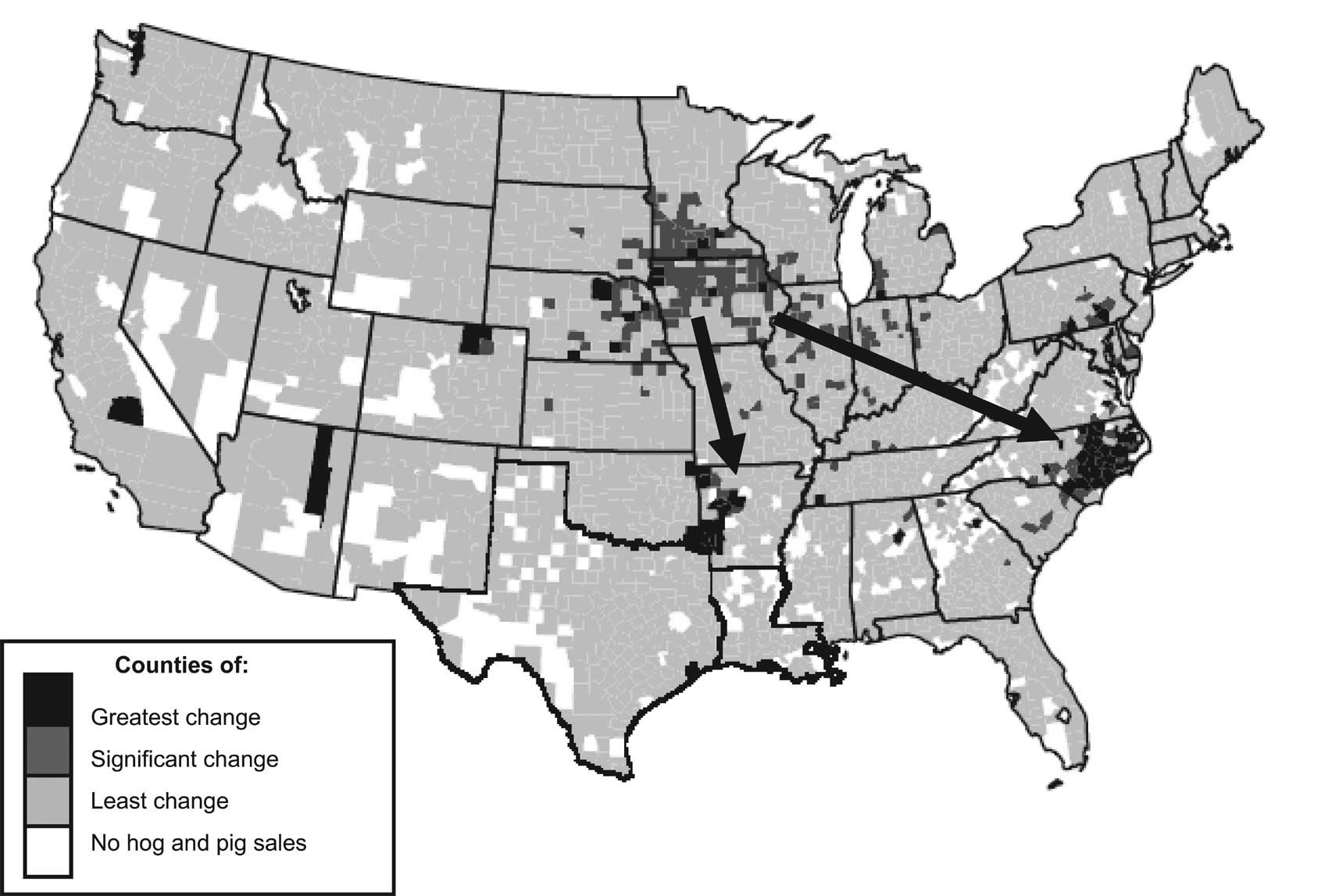
| Previous | Return to table of contents | Search Reports | Next |
| « Back to weltagrarbericht.de | ||
50 | North America and Europe (NAE) Report

Figure 2-1 4. Geographic changes in hog and pig production in the U.S. Source: McBride, 1997 (arrows added) |
||
|
||
facilities by US based firms, Cargill and Tyson. Sheep and lamb slaughter, while still very small has managed to almost double since 1976—a very different trend than the US. 2.5.2 Drivers of increased livestock output and productivity |
|
• Production-led subsidies that funded output and productivity increases (Starmer and Wise, 2007); The most important contributors of AKST to increased productivity have been changes in livestock genetics, livestock feeding and stock management systems. For example, selection involved in animal breeding took place at the farm level until the end of the 19th Century resulting in the adaptation of cattle, pigs, sheep, goats and poultry to specific (usually regional) farming and market situations (Hodges, 1999). Yield goals were blended with emphasis on selecting livestock that would thrive on particular types of land, climate and feed (CIV website). |
| Previous | Return to table of contents | Search Reports | Next |
| « Back to weltagrarbericht.de | ||